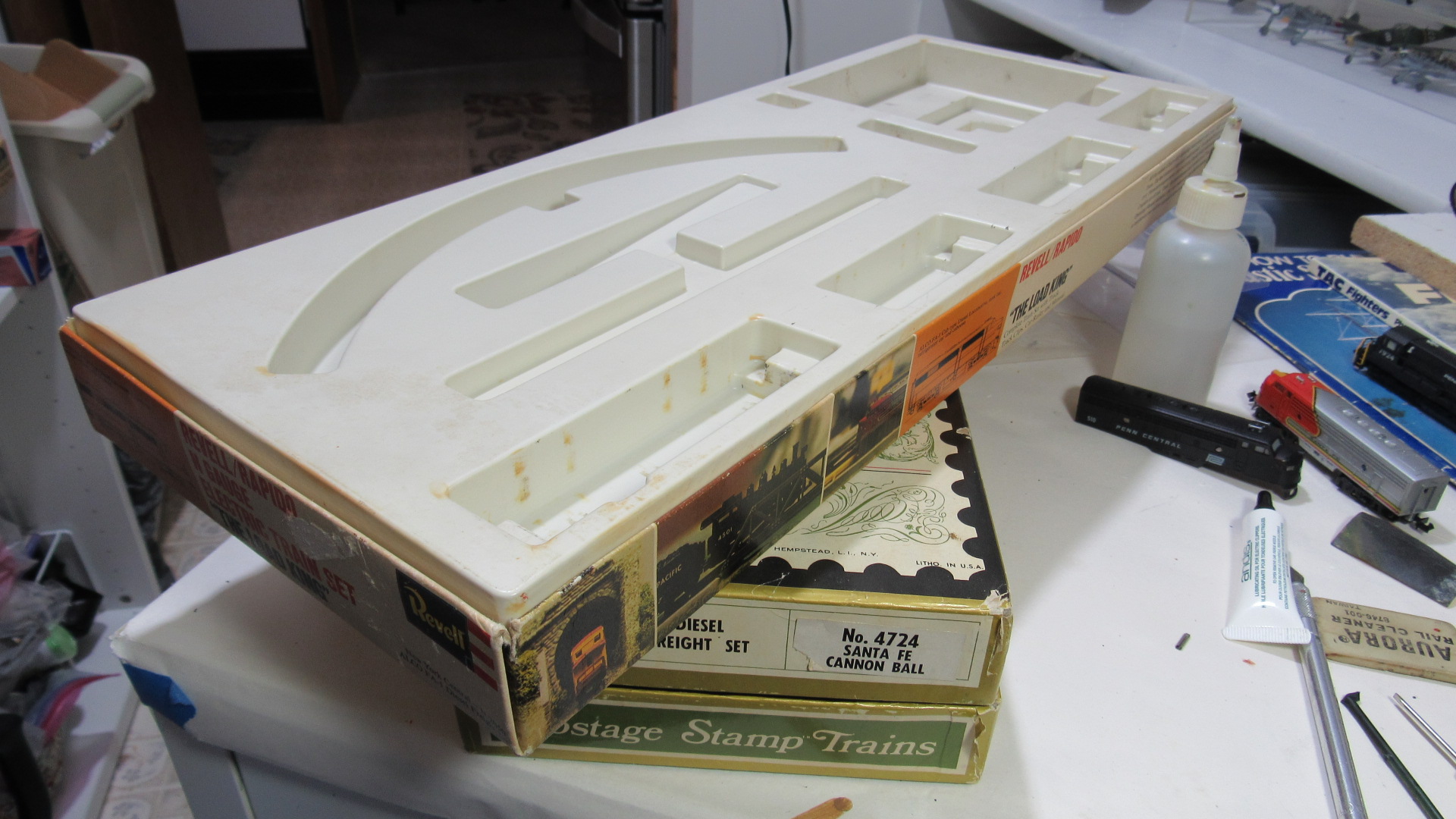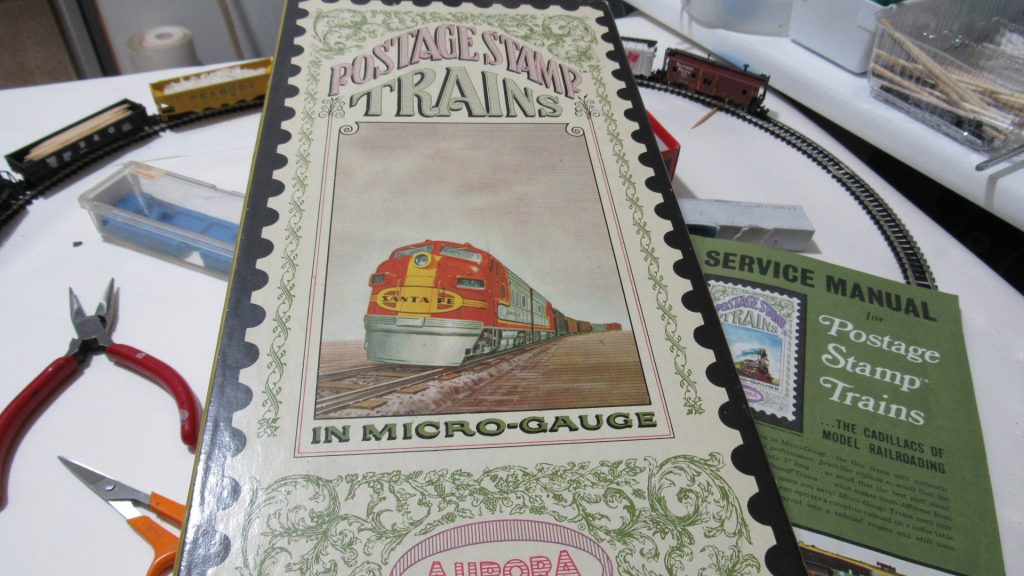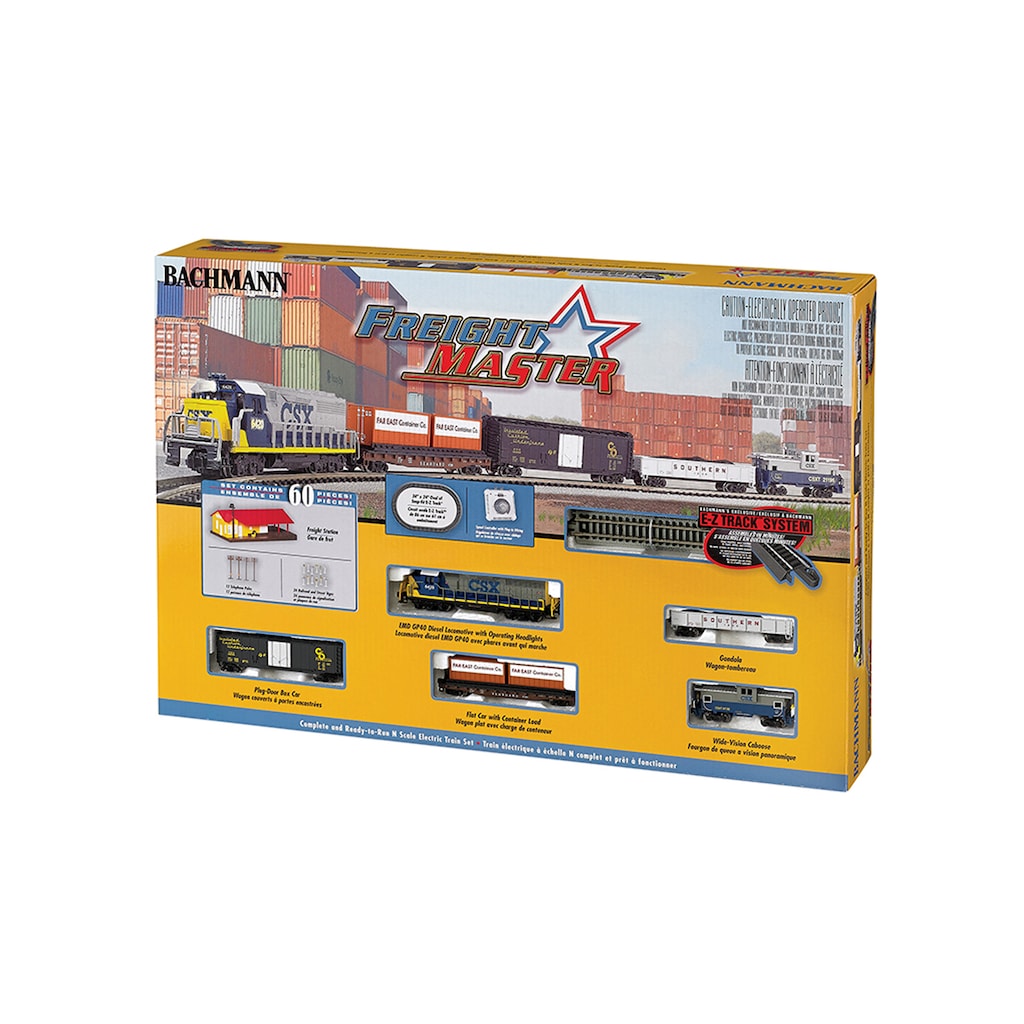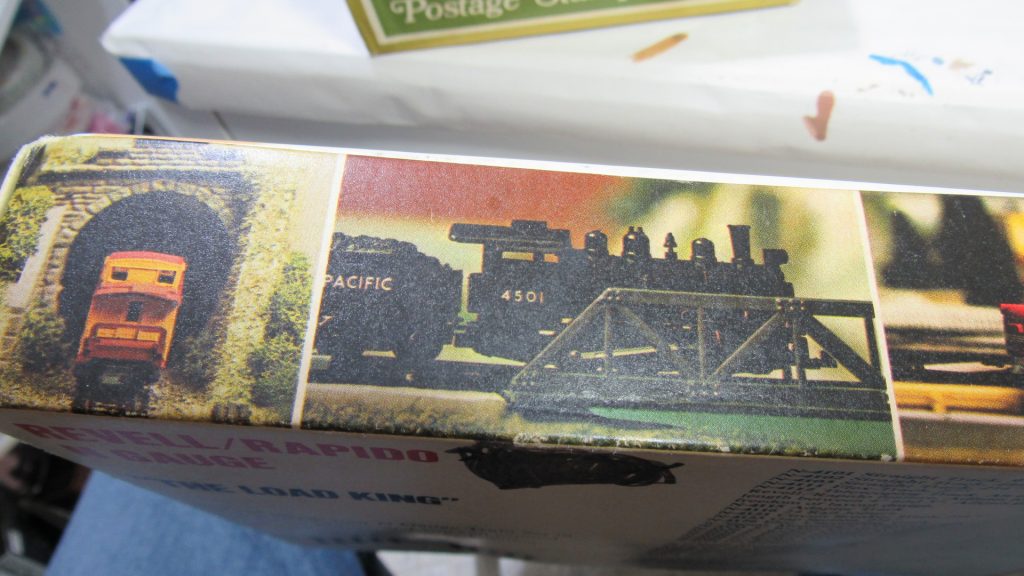
The Contenders
I have mixed emotions about “reviewing” either of these old trainsets “per se.”
Ultimately, I’m not going to judge these things on “what you get” or “money’s worth” or something like that. However— I absolutely need to introduce the players in this drama (or comedy) and explain how I feel about the way these toy trains were presented at the time.
So here goes.
A Tail of Two German-American Partnerships
Both Revell and Aurora jumped into the “n gauge” model railroading lake with both feet, wearing some pretty gnarly boots, and they hit the water with such force that the ripples lap the beach today as we contemplate the latest n-scale masterpiece from Japan. Seriously, though, they didn’t know what they were doing, and it shows in the way that the products they offered were somehow slightly confused. The source of this confusion was the double-reverse layup with a twist that had to happen to get German toys made for America into America with American brand names on them.
So two German companies, Trix and Arnold (married for fifty years in March) had to conjure up some American railroading magic, then send the result across the ocean to be repackaged and marketed by foreigners to make it look properly American.
Wow. No wonder everything in Revell’s catalog from 1970 looks a little confused. It’s like…it’s like somebody IMAGINED what American railroads were like and just made stuff by pretending.
Oh wait. That’s what happened.
Anyway, they didn’t have the internet in 1965, and so research wasn’t just tapping the “enter” key. The trainsets that arose from all this were not completely crazy only because the people involved actually cared. It couldn’t have been easy to get those mini-railroads to be as accurate as they turned out to be. The challenge in such a trans-Atlantic effort was substantial.
So… what do we have here? It’s apparent that in 1967 a number of otherwise sane people thought that “tiny railroads” would be the “next big thing” in the hobby business. I don’t know how they thought that up, but it appears that they did. The result was a world-class mis-cue that must have cost a lot of money. You see– America was NOT on the precipice of an n gauge railroad fad. Just didn’t happen.

“Beginner” trainsets are the same now as then. You get some track, some cars, a controller/transformer, and a tiny locomotive to pull the cars around the track. The track snaps (or slides) together and includes a power terminal and a thing to help put the cars onto the track. “Toy trains” had been around for decades, so in 1967 they knew what had to be in a set.
Now, of course, many of the “fancy” sets from Lionel, Marx and others included some scenery and the track might be a figure-8 and the cars and the scenery might interact in some way– like the cows might leave the cattle car and march up the ramp to the… whatever. Lights flashed and rockets fired into space and all kinds of stuff went on. But for n-gauge trains, the appeal was all in the SMALLNESS of it. It was expected to be impressive enough, just sitting there.
So tiny!
But seriously, you had to be a pretty weird bundle of cupcakes to think that was adequate. When other trainsets blew smoke, sounded whistles and bells and landed men on the moon the old “one train going around in a circle” just seemed boring. To a kid.
To me.
But the potential. It was there. It still is. You an build the entire Tokyo to Osaka bullet train on top of your footlocker.
Yes. The potential.
So in 1967 (or thereabouts) we had some rudimentary trainsets. I have one from Aurora with some track, some cars, a loco and a controller. I have one from Revell with some track, some cars, a loco and a controller. I have no idea what they sold for when new and although the Aurora set is “bigger” (it has three more cars) I’m not going to take that into account. At all. I just want to compare the basic technology and see which one really deserves the title of “best super-old trainset from 1968.” I have only one of each, so I can’ t compare the whole line. But I do have two similar sets. Both are “freight trains” with “streamlined” locomotives that would be more at home in front of a passenger train named “Super Chief” or “Broadway Limited.” But they aren’t. They are freight trains and the come with colorful and diverse cars, not “to scale” boxcars with “prototype” markings. So, you get a “circus train” effect.
But, then again, trainsets today look the same way.

In this installment, I’d like to compare the packaging of the two old trainsets, but I can’t really do that because the Revell set I got off of eBay had a box that seemed incomplete to me. No lid. I mean, did it have a lid at all, originally? Or was it just shrink-wrapped with a vacuum-molded insert in a simple box?
I don’t know. So comparing half of a Revell box to a complete Aurora “book” would be a bit unfair. I will say this– my pro-Revell streak dies hard. I still find a warm place in my heart for the old Revell effort, no matter how messed up the box may have been. The used example I managed to acquire kept the basic parts intact and free of major damage for fifty years, just as my “book” did for the Aurora “Cannonball.”
So that old Revell box did it’s job. And it’s covered with super-cool Revell images of tiny trains trundling along elvish glens and streams in some fantasy Kingdom of the Trains– where the lighting is always the golden glow of sunset.

Aurora’s book is practical, but the printed material looks like a 19th century handbook for medical disorders of the anus.
So, right off the bat, you’re going to see that I’m horribly biased. As much as I want to see the Trix product as superior German engineering (better than the inferior German engineering of Arnold) I can’t “un-see” the vastly superior Revell mind-control of the elvish trains in Lilliput. The way that Aurora marketed their product reminds me of an entire nasty branch of American culture that young people today know very little about– a kind of “proto-steampunk” that was best typified by places like Shakey’s Pizza where straw hats and player pianos harkened back to days of yore when everything was organic by default.
You can see a lot of this in the movie Butch Cassidy and the Sundance Kid.
It was revolting, but still, Shakey’s Pizza was outstanding.
…where was I?
One more thing. In case you haven’t seen it, here’s Aurora’s bizarre TV ad. Yes, a TV ad. Unbelievable. Is that the voice of Dick Cavett??
So I’m calling this a DRAW. That’s right. I’m saying that in terms of overall presentation, which is what Revell and Aurora were doing, they both did equally well. Or poorly. But the same.